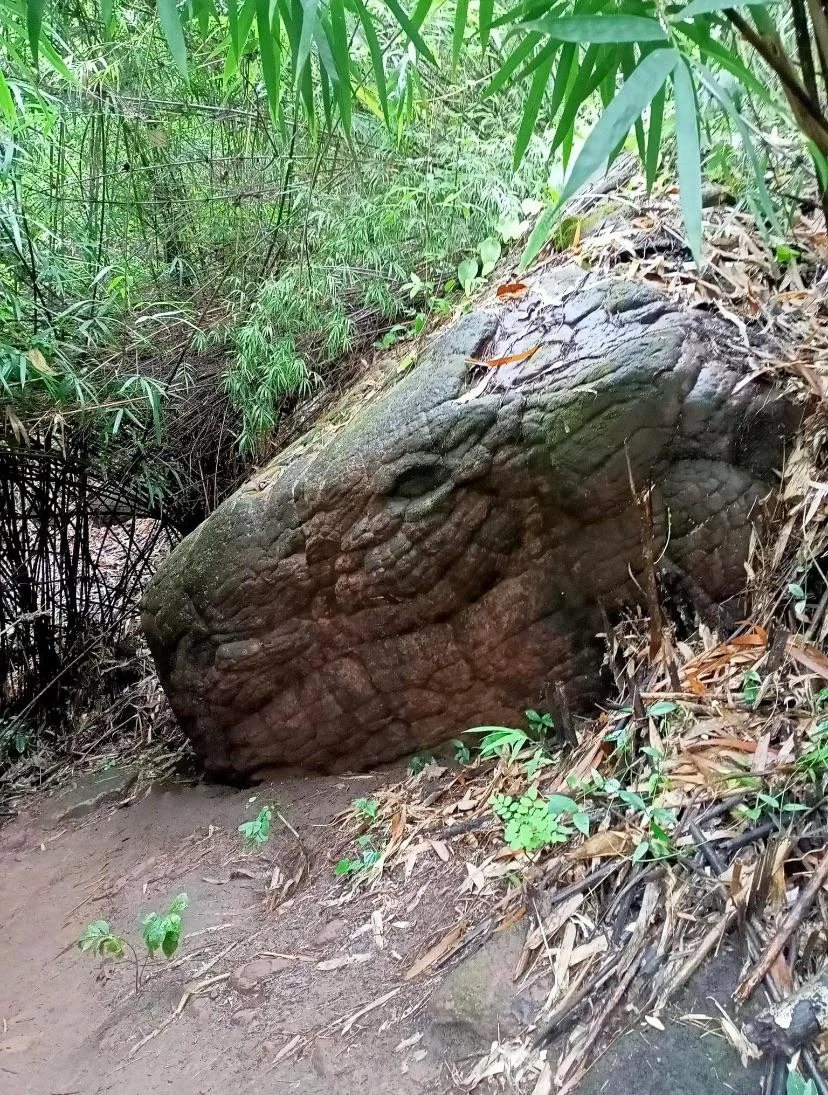If you ever find yourself exploring Thailand sometime in the future and are curious about attractions that don’t involve shopping and temples, head to Phu Langka National Park. This park is famous for the oh-so-eerie Naka Cave where a big snake-like rock quietly sits. Closely resembling a serpent, the snake rock is shrouded in mystery as many local folks believe that it was once a real giant snake.
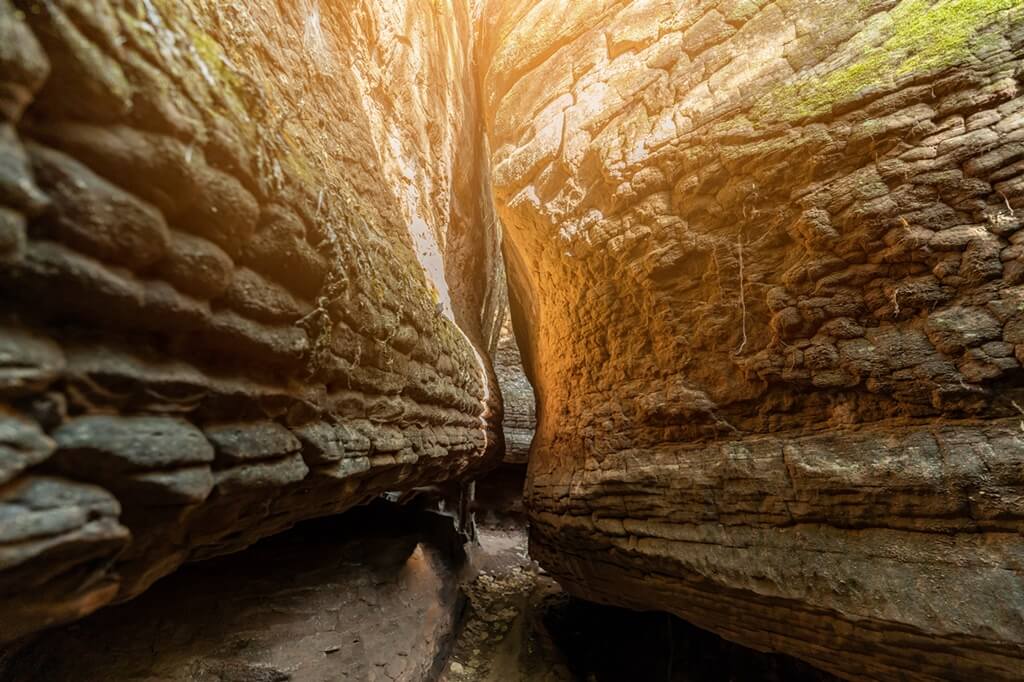
The giant snake rock in Naka Cave, Thailand
Naka Cave itself is reportedly home to several myths and legends, many of them imagined due to a part of the cave that looks strangely like a serpent. There is a specific stone slab that resembles a python’s head, while giant rocks with scaly texture look as if they’re the snake’s coiling body.
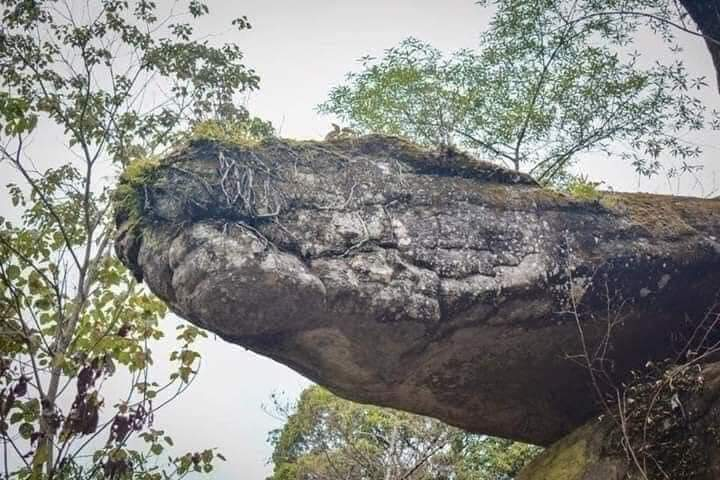
In Buddhist lore, the giant snake rock takes after the mythological snake called “Naga.” A naga is said to be half-human and half-snake, dwelling in the netherworld and occasionally taking the form of a human. Legend has it that the Mekong River in northeastern Thailand and Laos was actually created by two Naga kings, slithering in the area that’s now part of the Phu Langka National Park. If we’re to stay faithful to the legends of yore, then just maybe, the snake rock might have been one of the Naga kings resigned to a long slumber.
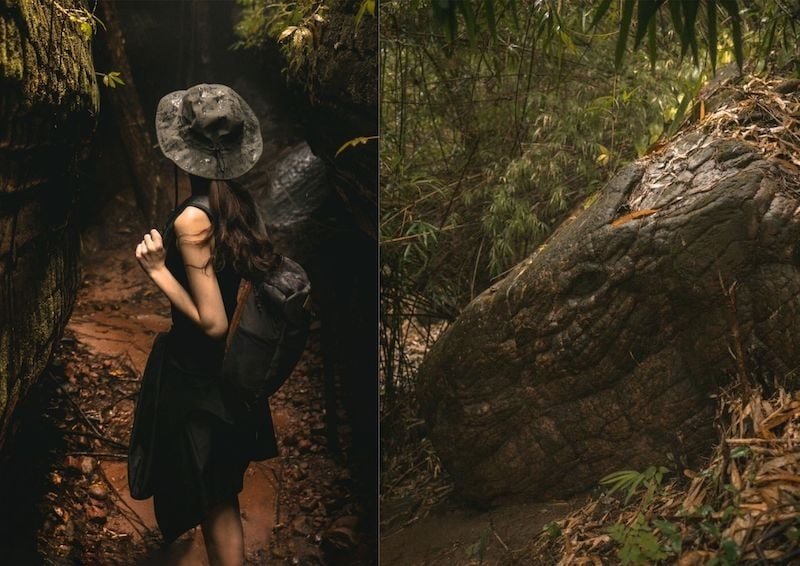
Another theoretical folklore that attempts to explain the giant snake rock is less cultural but a bit more daring. Some tourists actually speculate that the giant rock was once a titanoboa, petrified due to volcanic eruptions. A titanoboa, as you might already know, is considered to be the largest snake ever to roam the earth before its extinction. Given the size of the snake rock, this theory isn’t hard to imagine.
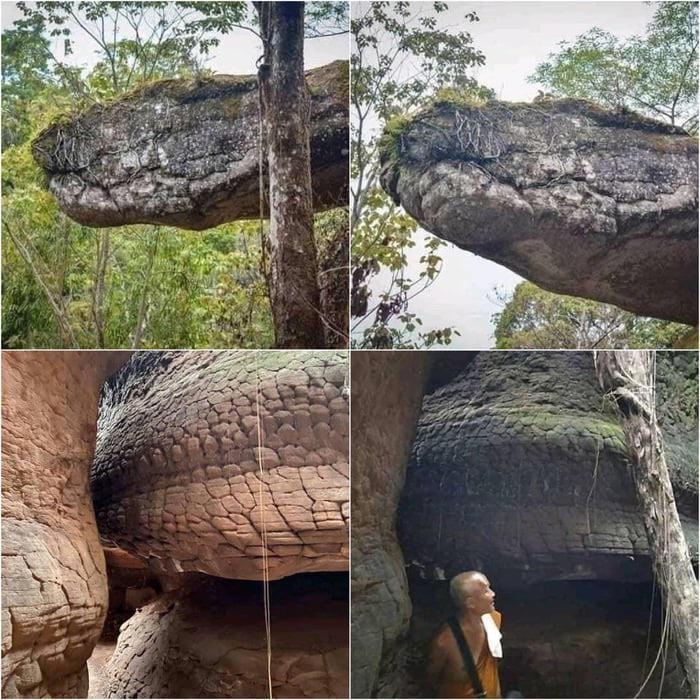
But alas, there is a scientific explanation for everything. According to Phu Langka National Park officials, the giant snake rock is actually made up of sun-cracked rocks that are more than 100,000 years old. The sharp temperature differences between day and night caused the rock to expand, contract, and eventually crack. Matched with water erosion, the scale-like pattern of the giant snake rock was eventually formed.
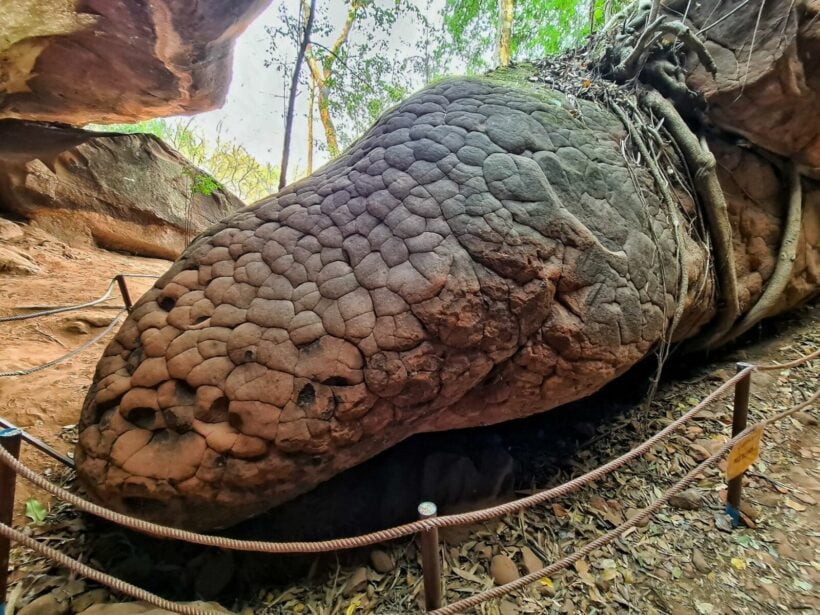
This is an interesting attraction in Thailand, don’t you think? It’s fairly new too, since it was just discovered in 2020. Make sure to update your Thailand itinerary with the giant snake rock of Naka Cave, Thailand!
